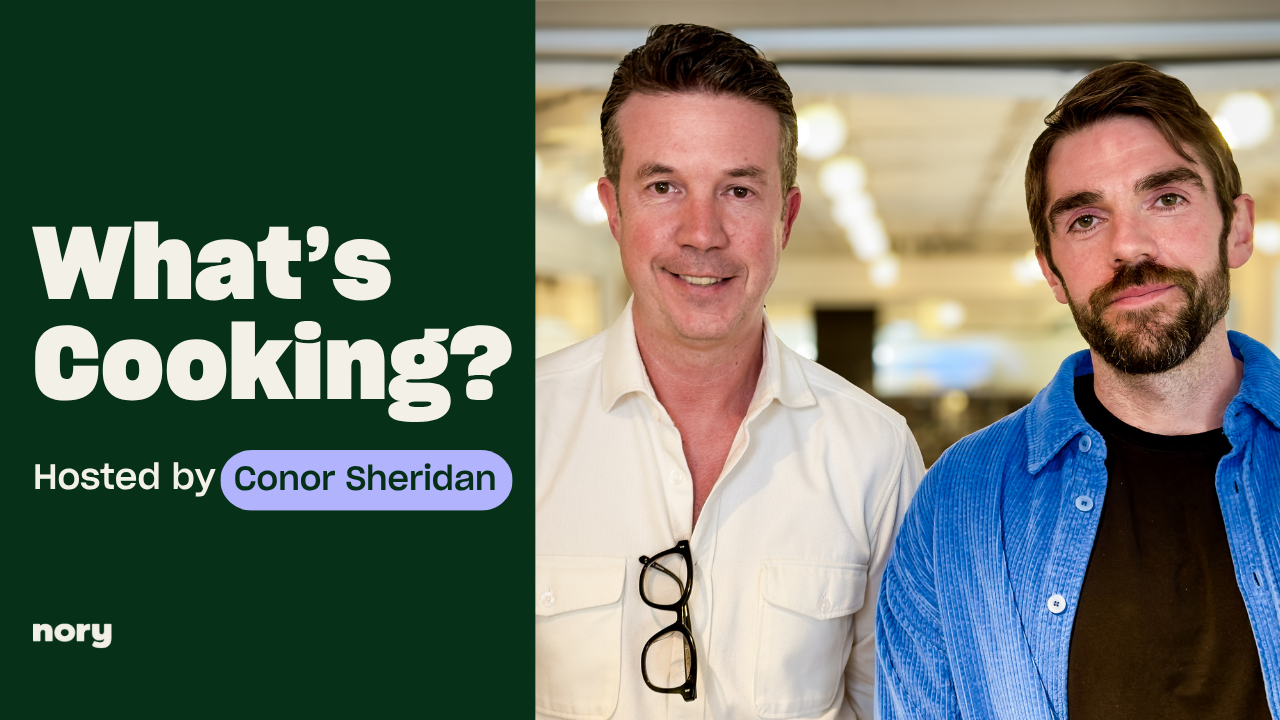What is the role of change management in future-proofing your restaurant?
187 priorities. 47 sites. One clear mission.
That’s how Tom James, MD at Bill’s Restaurants, doubled EBITDA and broke sales records—without burning the team out.

In our launch episode of What’s Cooking? in conversation with Conor Sheridan, Nory CEO, Tom shared what it really takes to lead change in hospitality when the stakes are high and the margin for error is low and he shares 4 key lessons:
Change isn’t optional. It’s operational.
Post-pandemic hospitality is a different game. Teams are stretched. Guest habits are shifting. Tech’s moving fast.
Tom walked into Bill’s with a backlog of problems and a long to-do list. He didn’t try to do it all. He got laser-focused.
“Bill's has been around for 20 years. It's a legacy brand. A lot of the team's been there for ten, 15 years. So trying to drive that change we knew was going to be the challenge and really, really tough.”
Every team knew the plan. Every decision had a reason. That alignment was the foundation for change.
Start with why. Then back it with action.
At Bill’s, the mission was simple: make everyone happy. Not just a nice idea—an operational directive.
“I think often with change, the problem is you explain the action or the how, without really going into detail of the why. And so we came up with our goal, if you like, of everyone leaves happy. And that was instantly something that people can understand.”
From guest experience bonuses to visual rebrands and new service flows, every move backed that purpose.
“And the really nice thing, I think when you give people a reason for change and they sort of buy into it and they, they fight for it.”
It wasn’t fluff. It was a filter. If it didn’t serve the mission, it didn’t happen.
Test it. Prove it. Then scale it.
Innovation isn’t brave if it’s blind. Tom’s team tested new operations/menus in a two site trial — watching how teams reacted, listening to guests, tracking the data.
That’s how they nailed their hybrid service model:
- Guest-friendly
- Team-approved
- Operationally sound
“And then if that's been positive you scale it up to five sites and then it can go to group rollout.”
Tech is a tool. People are the point.
Tom doesn’t chase shiny tools. At Bill’s, tech is only worth it if it creates more time for real hospitality.
AI chatbots? Helpful. Team sentiment trackers? Insightful. Deployment tools? Time-saving.
“Technology should give you more time, more space, and more freedom.”
Three takeaways for operators leading change:
Clarify the mission. Make it simple, specific, and sticky.
Don’t overload. One big change at a time. Do it well.
Communicate creatively. Use short videos. Internal champions. Whatever works to keep the energy high.
Transformation isn’t about doing more—it’s about doing what matters, better.
Tom’s story is a blueprint for hospitality leaders who know things need to change, but want to do it the right way.
Lead with purpose. Trust your team. Test everything.
That’s how you make change stick.
Watch the full episode here
And don’t forget to subscribe!
FAQs
What is change management in hospitality?
Change management in hospitality is the process of planning, implementing, and sustaining operational changes — from menu rollouts to tech adoption — in a way that improves performance without disrupting service or burning out teams.
Why is change management important for restaurants?
Restaurants face shifting guest habits, rising costs, and evolving technology. Strong change management ensures new initiatives are implemented smoothly, staff are engaged, and guest experience stays consistent.
How can hospitality leaders make change stick?
Focus on one major change at a time, communicate the “why” clearly, test changes in a few sites before scaling, and involve teams in the process from the start.
What’s an example of effective change management in hospitality?
At Bill’s Restaurants, MD Tom James doubled EBITDA and broke sales records by aligning every team around a single mission — “everyone leaves happy” — and backing it with tested, measurable changes.

.webp)
.webp)

